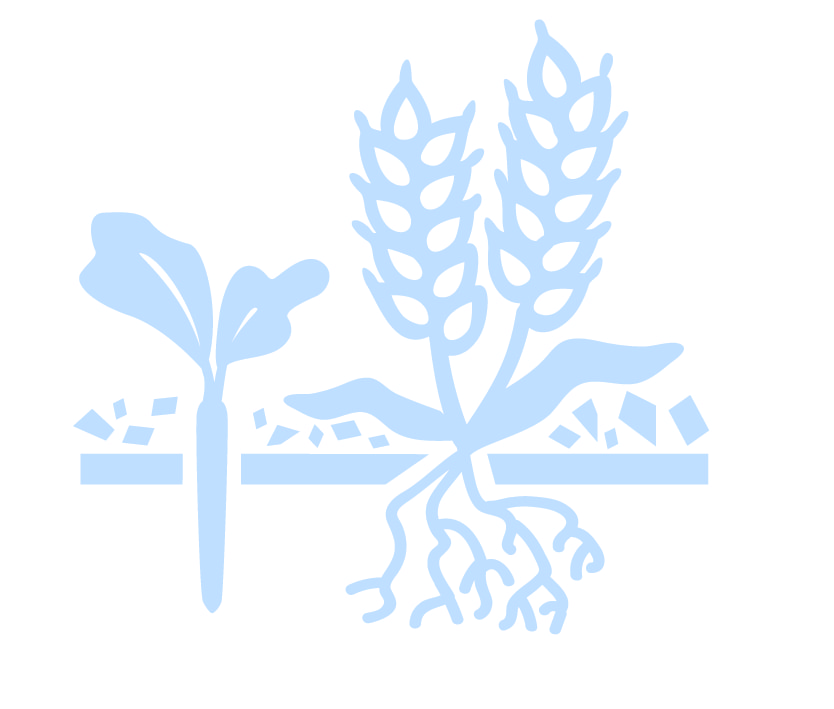
Cover Crops: Various crops grown between the harvest of row crops, like corn or soybeans and planting of the following year’s row crop to cover the soil, reduce nitrogen loss through plant uptake and phosphorus loss through reduced erosion.
Cover crops such as winter rye are planted in the fall before harvest or after row crops are harvested to help reduce the loss of nitrogen and phosphorus from the soil and capture nutrients for next year’s crop.. Cover crops are a very important component of the Iowa Nutrient Reduction Strategy because of significant and immediate benefits for water quality across all landscapes. Cover crops are flexible, improve our soil resource over time and require a relatively low capital investment by farmers and prevent erosion. Though Iowa farmers planted about 400,000 acres of cover crops in 2015, Iowa stakeholders look to build this to the millions of acres needed to have a significant positive impact on water quality statewide.
On average, the use of cover crops such as winter rye can reduce nitrogen loss by 31 percent and phosphorus loss by 29 percent. Other important benefits for farmers include improved weed control, a source of forage for cattle producers and improved soil health. With long-term use, most farmers observe soil health changes such as improved water infiltration, increased soil organic matter, increased water retention capacity and improved resilience to more dramatic seasonal climate events.
Iowa Learning Farms shows how cover crops and no-till affect runoff.
Planting cover crops is not business as usual. Intentional management is necessary for success. Challenges that farmers must overcome to get the full benefits of cover crops could include the short growing season between crop harvest and cold winter weather, inconsistent rainfall and the potential for decreased seed-to-soil contact. All of these factors determine how effective cover crops will be at reducing nutrient loss. Cost also is a consideration since the expense is offset by items that are not easily monetized by row crop producers such as reduced soil erosion and nutrient loss. Livestock producers however, may see an immediate return through reduced feed costs when cover crops are used as forage. In years of low commodity prices when farm margins can be thin, the $25 to $50 per acre cost for cover crop seed, seeding and crop termination can be a questionable short-term investment. Uncertain land tenure also reduces incentive to use cover crops because the major benefits tend to build up over multiple years of continuous use. Depending on the crop planned for the following spring, increased scouting for pests such as armyworms, wireworms and cutworms also may be required.
Another key factor is planning. Those who plan their cover crop program up to a year in advance of seeding are more likely to be successful. This planning includes identification of goals for the cover, such as reducing soil erosion, scavenging nutrients, providing livestock forage or reducing compaction. The goal will impact cover crop species seed selection, seeding methods and many other management aspects. It is helpful during the planning phase to consult with farmers, agronomists and others with cover cropping experience. The plan should also consider priority fields, cover crop species and variety, seeding method and timing, herbicide program, crop rotation, termination approach and integration with manure application. Although having a good plan is essential, flexibility in adapting the plan to current conditions also is important.
Additional Resources:
For a wealth of information on cover crop selection based on your county and specific goals, consider using the on-line cover crop selection tool developed by the Midwest Cover Crops Council on your own, or work with your Certified Crop Adviser:
- Cover crop selection tool, Midwest Cover Crops Council
For guidance on integrating cover crops into a corn-soybean rotation, details on seeding methods and termination as well as addressing other key challenges visit:
- Terminating Cover Crops, Iowa State University (ISU), ICM News
- Cereal Rye Cover Crops, Allelopathy and Corn, ISU, ICM News
To learn even more about cover crops, check out these resources:
- Midwest Cover Crops Council
- Iowa Learning Farms
- Practical Farmers of Iowa
- Sustainable Agriculture Research and Education, SARE
- ASA Cover Crops Webinar Series
- Soil Health Partnership
For farmers’ perspectives:
Getting started with cover crops, benefits, grazing and growing cover crops for seed
Adding a cover crop to corn and soybean rotation - Part I planting
Adding a cover crop to corn soybean system - Part II termination
